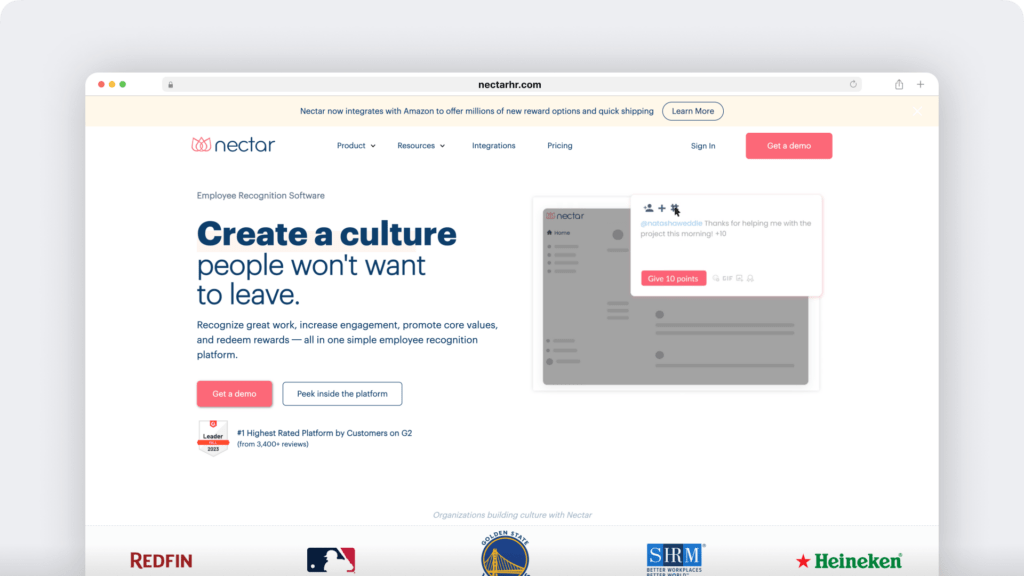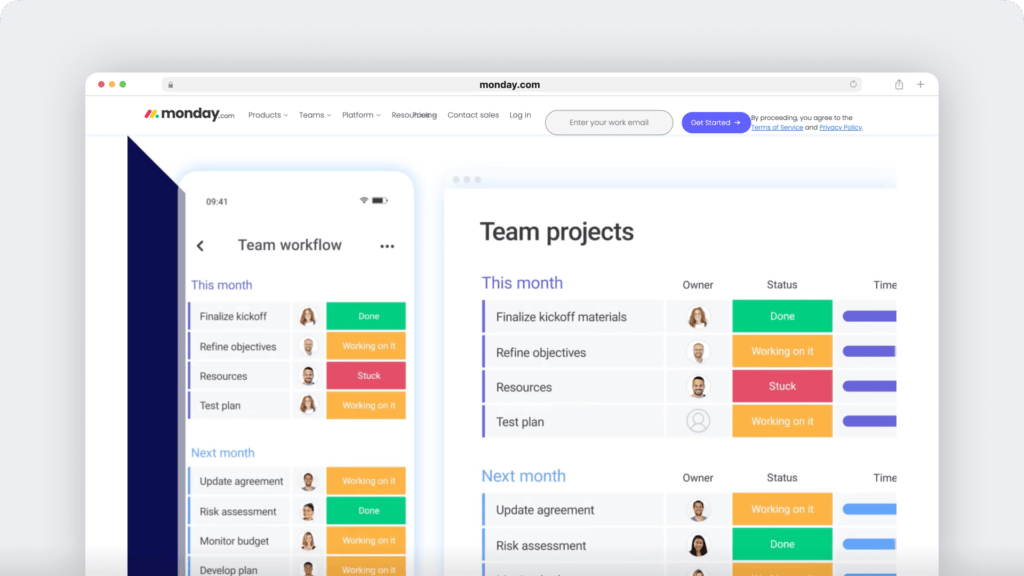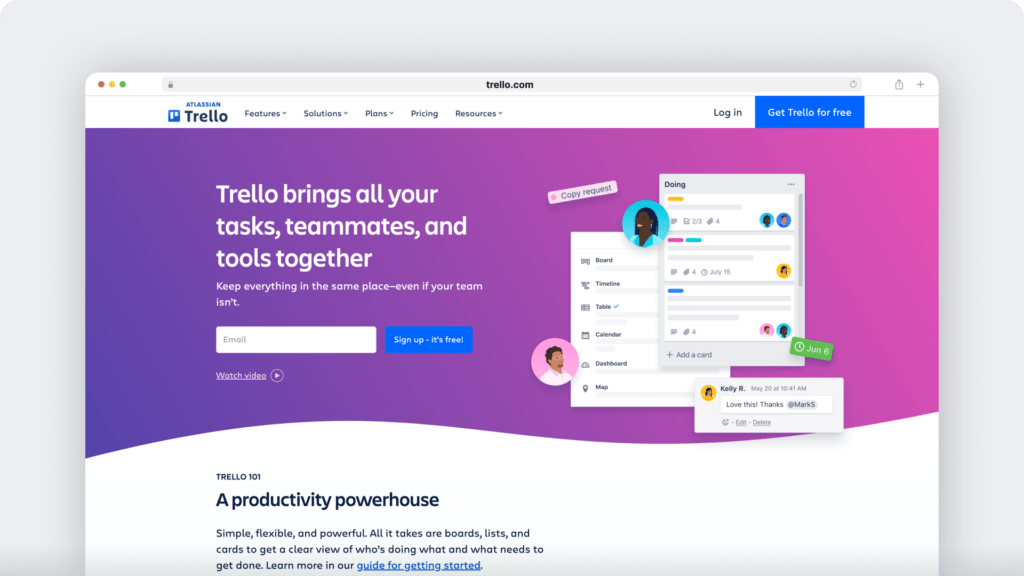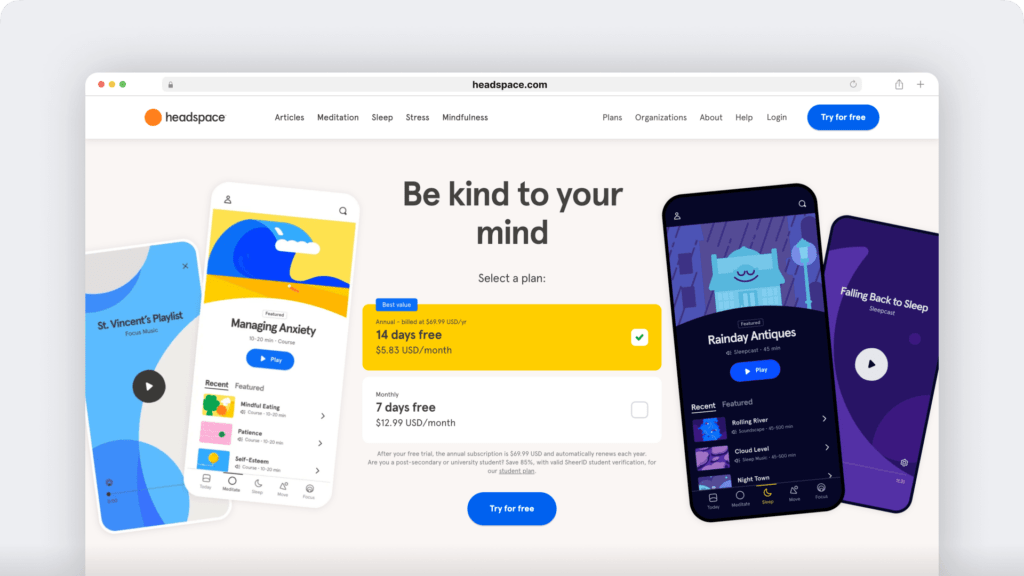A few decades ago, working from home was a luxury. However, in the wake of the COVID-19 pandemic, remote work has boomed, and flexible work environments have become almost an expectation of employers.
The accelerated shift to remote work has presented many challenges, particularly around communication, monitoring progress, and meeting deadlines.
But it has also created many opportunities, such as access to more talent, better work-life balances, and enhanced company cultures. It’s these unexpected positives that mean remote work is here to stay.
With this in mind, we examine how you can create a strong remote culture in your company. This article offers tips and tools for managing remote teams, optimizing efficiency, and facilitating communication.
Table of Contents
- Why is remote work culture important?
- What is remote work culture?
- Why having a strong remote work culture is important
- 10 tips to create and maintain a strong remote work culture
- The best tools for creating remote work culture
- Final thoughts
Remote work culture is the foundation of successful business operations in the digital age.
Let’s find out why.
Why is remote work culture important?
Here are some statistics to ground our discussion, courtesy of research by Forbes:
- 98% of workers want to work at least partially remotely.
- 16% of companies operate fully remotely.
- On average, remote workers earn $19,000 more than in-office workers.
- 57% of workers would quit their jobs if their employer didn’t offer remote work.
- 65% of workers want to work remotely full-time.
- 71% of remote workers said their flexible schedule helps balance their work and personal life.
Remote work, either in a full-time or hybrid format, is valued and expected by workers.
Organizations that offer remote work must establish a company-wide remote work culture to remain productive, work effectively, keep remote employees happy, and continue to grow.
What is remote work culture?
Remote work culture consists of the values, attitudes, and expectations a company has towards remote teams and their work. It includes how remote employees stay connected, how they collaborate, what actions are rewarded, and what systems are in place to facilitate employee engagement.
Remote work culture extrapolates the company culture into the digital landscape. It also helps companies maintain their cultural standards in person and adopt new standards for digital work.
For example, let’s say a company’s culture encourages open communication between frontline workers and senior figures. In-person, this would include an open-door policy and frequent facetime.
To adapt this aspect of company culture to remote work, the company would need to create online best practices so employees and managers could maintain a similar level of accessibility to one another while keeping workflows efficient and effective.
Why having a strong remote work culture is important
Many workers consider workplace culture a more critical factor than salary when deciding to join or leave a company.
If this trend continues, a strong culture is essential for attracting top talent and keeping it. It can help a company stand out and recruit employees who resonate with the remote work culture it has created.
A positive culture is also vital to employees’ mental and physical well-being. A strong remote work culture can counteract the adverse effects of remote isolation and help build long-term relationships within the company. This increases employee satisfaction and brings a wealth of desirable knock-on effects.
Happier team members are more productive, produce higher-quality work, and are likelier to stay. You’ll establish an efficient, open-minded team to boost your company’s revenue and growth.
Conversely, a poor remote work culture can severely harm your organization. Employees may feel less valued and less connected to the company. Ultimately, this can hinder job satisfaction, productivity, and employee retention.
Simply put, a strong remote work culture is positive for multiple aspects of business. It helps facilitate communication between all interested parties, maintain and improve morale, and lower attrition rates.
10 tips to create and maintain a strong remote work culture
We know that building a strong remote work culture can have far-reaching benefits, but it can be challenging to know where to start. On top of this, how do you maintain a strong remote work culture in the digital landscape?
Here are some tips companies can implement to create and maintain a strong remote work culture:
1. Frequent communication
Frequent communication is a vital part of a well-oiled remote company culture. Companies can easily fall into the trap of organizing fewer meetings and facetimes when not in the office.
While this can reduce micro-management and increase productivity in some cases, the lines of communication must remain open so relevant stakeholders can stay on the same page. A greater level of communication between remote workers is fundamental.
Establishing an “open inbox” policy among all company employees will facilitate asynchronous communication. Let employees know that your email or direct message inbox is open for any questions or concerns at any time of the day.
In an office setting, employees can walk over to another person’s desk if they need to have a conversation.
In a virtual environment, however, communication methods must be adapted to suit a non-physical presence. Asynchronous communication tools like Asana, Slack, and Bubbles can facilitate interaction and problem-solving in remote teams.
It’s also worth establishing communication best practices and educating your staff about them. This helps every employee understand what remote communication methods are available and what is expected.
These best practices can also be adjusted and improved to adapt to changing work conditions.
2. Invest in remote work culture tools
Remote collaboration tools were already gaining more traction in corporate culture before the COVID-19 pandemic. However, now companies are finding them critical to maintaining efficient and effective business operations.
Investing in remote work culture tools can positively impact the bottom line. These tools help team members communicate better, transfer necessary files back and forth, share screens, and manage their time effectively.
They can even help companies reward employees for remote work, creating incentives and motivation for remote teams. These tools are a godsend for fostering a positive workplace culture for virtual teams and improving company-wide employee engagement.
Remote work tools may include communication software like Slack and Zoom, cloud and file-sharing apps like Dropbox, and project management tools like Asana and other CRMs.
3. Empower your team with expert onboarding and training
In the transition to remote work, employers may feel uneasy about onboarding new employees without sizing them up in person. What’s more, leaders often leave recruits unprepared for their roles.
As a result, companies need a comprehensive onboarding and training process so that new employees feel comfortable in their positions. Relay as much information as possible to them, including new policies, digital workflows, and expectations moving forward.
You must also give recruits access to the right tools and teach them how to use them if they need more clarification. A rigorous onboarding process in this way will allow starters to do their work effectively and will help them settle into their new job even without a physical presence.
Remote work can easily lead to employee disengagement from their job or the company. You can boost staff engagement by promoting continuous learning, self-development, and other upskilling opportunities.
This will not only keep employees mentally stimulated, but it will also ensure that your employees are becoming better at their jobs. Give access to online courses, run virtual workshops, or even host the occasional quiz – these activities are essential for your staff’s well-being and continuous professional development.
4. Establish connections between employees
Defining corporate culture can be difficult as there are various types, but the main principle of corporate culture is that it centers around employee connections.
People interact with their coworkers as much as, or sometimes more than, their friends and family members outside of work.
In other words, those connections are essential.
To create and maintain a strong remote work culture, put processes in place that help employees establish connections with one another.
5. Host virtual team-building activities
Most employees want work to be fun in some way. Team-building activities and group traditions add a sense of merriment and joy to work and help employees build relationships with each other.
For instance, you could host regular virtual quizzes over Zoom or play games like Wordle via video link. You could also give everyone a food delivery voucher and host an online lunch where employees eat together and chat during their lunch breaks.
If you have a physical office space, you could also arrange a group drinks night in the office once a month. This allows remote workers to meet their colleagues in person and build deeper connections with their workmates.
Little traditions and team-building activities like these can increase remote employee satisfaction and help develop social bonds within the company – even if employees never see each other in person.
An events calendar can help with this. People need to know what is happening and when. When are regular meetings scheduled? When are new events coming up? What do people need to prepare for, and how long do they have to prepare?
Developing an events calendar will often lead to better individual and team productivity. This is also a helpful starting point for maintaining good calendar management practices. Keep running documentation of events so employees can stay in the know.
6. Offer more flexible ways of working
Flexibility is essential in the world of modern work. Flexible work schedules are a top priority for many employees, so employers who offer hybrid and fully remote work opportunities regularly attract the best talent.
Implementing a trust-based approach towards remote work, where employees can choose their hours and work according to their personal schedules, will improve staff satisfaction and retention levels. Flexibility in this way helps employees lead a more fulfilling and balanced life with a healthier work-life balance.
7. Be open to feedback
Remote work is no place for egos to surface and become bottlenecks to company growth. While working online, every employee and senior figure should be open to receiving feedback on their work.
It’s worth introducing regular feedback sessions and surveys where all parties can voice their thoughts on each other and reflect on themselves. This will help senior figures gauge employee satisfaction and gather insights to improve the business.
Remember that feedback must be given at appropriate times and through the proper channels.
As an employer, you need to decide whether certain types of feedback should be made public to other team members or if it should be sent privately through email or direct message.
This ensures proper respect is given to the employee or employees receiving feedback. At the same time, it makes sure managers deliver necessary feedback on time.
8. Reward employees
When employees feel valued for their work, they are much more motivated to produce higher-quality work for the company. When employees are regularly rewarded, workplace satisfaction increases enormously, and people enjoy their jobs more.
This does not differ in a remote setting. Employees always want to know that their work is valued. Employers must establish effective recognition and reward schemes so their employees can feel valued for their contributions.
Set parameters for rewarding work so team leaders know how and when to give recognition and let employees know how their work can be rewarded. This could involve simple compliments and positive feedback, rewards programs using tools like Perkbox, or small luxuries like longer breaks, prizes, or time off.
9. Encourage diversity and inclusion in your company
Creating a more inclusive workplace culture will bring numerous benefits to your team. Employers must foster an open and progressive environment with diverse ages, genders, races, and cultures, even in a remote setting.
Unbiased and inclusive hiring is the key to establishing diversity in your company. Once you have a diverse team, you will reduce workplace toxicity, enhance innovation, and create a safe culture that your staff feels comfortable with.
Diverse minds create more innovation because employees can draw ideas from a number of backgrounds, experiences, and cultures. This will enhance growth, improve brand reputation, and boost staff retention.
10. Promote well-being and a healthy work-life balance
Finally, one of the aspects many employees like about remote work is the increased work-life balance that can come with it. The extra flexibility and trust can boost your team members’ mental well-being.
No commute means staff can wake up later and get a better night’s sleep. They also have more time to care for themselves, their family, and their household duties. Employees can find more time for exercise, healthy cooking, and pursuing hobbies and interests.
However, the isolation of remote work can be challenging for some employees. That’s why you, as an employer, must promote mental well-being and encourage staff to set realistic boundaries to safeguard themselves.
Promoting a healthy work-life balance through your remote work culture can show employees you care about their well-being. It can also remind other employees to take care of themselves.
The best tools for creating remote work culture
A remote work culture can only function properly with the right tools that encourage efficient and effective business operations.
Here are the top tools to make sure your remote teams function to the best of their abilities:
1. Time Doctor

Time Doctor is a software that helps companies track how employees spend their working time. Some of the key features include:
- Track time spent on each task, project, or client
- Track how long breaks last
- Daily and weekly summary reports
- Online timesheets and payroll features, fully customizable
- Create tasks, assign projects, and track progress on projects
- Track budgeting for each project
- Track which websites employees visit
- Keystroke logging
- Employees can view their own time statistics and adjust accordingly
- Distraction alerts if the software notices you’ve gone off-task
- Available on all devices
- Integrates with popular project management and accounting tools, like Slack, Trello, and QuickBooks
- Highly customizable – meaning managers can turn most options on or off
- Work-life balance monitoring. Time Doctor can spot signs of burnout in individual employees
- All information is encrypted for privacy and security
- White labeling for client access under your domain
Companies that require detailed time management can benefit greatly from a tool like Time Doctor.
Time Doctor’s value centers around the availability of features and their customizability. Managers have a range of time-tracking options to choose from to fit their management style and what is best for their teams.
The tool comes with a 14-day free trial. The Standard version for one user costs $10 per month, while the Premium version costs $20 per month. Time Doctor pricing scales up as more users are required.
2. Awardco

Awardco is an employee reward and recognition platform. The software can be customized and automated to suit each company’s workflow and priorities.
The reward network includes Amazon Business, which offers discounts, free shipping, and recurring delivery tailored to business operations.
Awardco points can be used for hotels, event tickets, company merch, gift cards, or charitable donations. Employees can even choose their rewards.
Awardco lets you automate birthday celebrations, service awards, company milestones, and more. Employees can also earn points for completing a survey, a quarterly goal, or even a fitness challenge.
A rewards platform like Awardco can help companies integrate employee recognition into their remote work culture and improve employee retention.
3. Microsoft Teams

Microsoft Teams has become an essential piece of software for remote workers. It’s an all-encompassing system that facilitates communication, collaboration, and project management among remote and hybrid teams.
With AI-powered software, Teams keeps you in the loop with everything happening in your company and provides easy access to all your colleagues and employees with just a few clicks.
Plans are flexible, and you can pay for what you require. This may include file sharing, instant messaging, video conferencing, workflows, hot desking, and screen sharing.
Microsoft Teams offers solutions for businesses of all sizes, from start-ups to multi-national enterprises. Again, it’s an essential tool for companies that operate wholly or partially remotely.
4. Nectar

Nectar is another employee recognition platform that helps companies improve employee retention.
It offers features that help companies build trust with employees, promote cultural values, and foster team building.
Teams can choose the core values they want to promote and recognize other team members who exemplify them. This helps employees not only feel valued by their bosses but also by their peers.
The Nectar rewards suite includes Amazon items, branded swag, digital gift cards, and more.
Managers can also set up the software to reward employees for completing challenges, like taking additional remote training or writing a company review.
It has a robust free option that allows for unlimited users. They also offer Standard and Plus options for additional features.
5. Slack

Slack is one of the most popular tools to increase employee productivity. The platform allows teams to easily message one another, transfer files back and forth, organize chat rooms, and more.
Slack’s messaging platform is organized into channels that allow teams to separate conversations and foster daily interactions. Slack Connect also allows teams to collaborate easily with teams at other companies.
Slack integrates with popular corporate tools like Google Drive, Office 365, and 2,200 more.
The software has a free option, and its pricing scales up with increased users and features.
6. The Go Game

The Go Game is an events company specializing in team-building activities and events for professionals. They can provide fun activities to turn even skeptical employees into enthusiastic team players.
In 2020, they launched Weve, a virtual meeting platform to connect remote employees and help build team cohesion.
This gamified video-conferencing platform lets employees enjoy fun and engaging virtual events. These events include trivia, brainteasers, online game sessions, fact matching, lip sync battles, and more. You can even get a live host from Weve.
These virtual team-building activities improve employee engagement and allow remote team members to build relationships with their colleagues.
Weve is priced per event, starting at $299 for a single room that can host up to 10 people.
7. Monday.com

Monday.com is a versatile project management tool. Managers can use it for:
- Creative and design management
- IT management
- Software development
- Marketing management
- Projects
- Sales and CRM
- Task management
- HR
- Operations
It is a work operating system for customizing workflows and promoting team alignment and efficiency. You can manage employee performance easily and ensure your operations run smoothly, even in a fully remote team.
Monday.com has a free plan for up to two users, and its basic plan starts at $8 per user per month. This makes it an ideal tool for remote work environments.
8. 15Five

15Five is an employee monitoring tool that gives employers accurate insights into team members’ performances, engagement levels, and productivity. A clear and helpful user interface allows managers to extract necessary information quickly and easily.
This, in turn, facilitates continuous feedback and performance reviews. This is crucial in remote work, as you must ensure your employees produce high-quality work and meet deadlines.
With 15Five, you can maximize your company’s efficiency and optimize employee retention. Remote workers will feel more valued and connected to the company, and you can reassure clients that your business is producing quality results.
9. Trello

Another essential tool for remote teams is Trello, which facilitates collaboration, communication, and efficiency among remote and hybrid teams.
With an easy-to-use interface and a helpful dashboard, Trello allows remote workers to easily keep track of their assignments and communicate with their colleagues and team leaders.
It has become an essential tool for many companies operating a remote or hybrid work model. With different plans depending on your business size, you can find a solution that works for you.
10. Headspace

The pandemic was horrendous, but at least it highlighted the importance of mental health and well-being for remote workers. Headspace is an app that offers meditation and relaxation techniques and virtual therapy sessions.
These are valuable resources that remote employees can use to improve their mental health and remain calm and grounded. This will help them focus more during work, and you’ll experience higher productivity if your remote workers feel happier.
Employers must consider providing access to apps like Headspace if they value their employees’ well-being. Wellness apps give workers access to self-help channels, making them better and more satisfied in their jobs.
11. Zoom

Zoom is the most popular video conferencing platform on the market right now. It allows teams to conduct video meetings, text chats, phone meetings, and online events.
Due to its reliability and popularity, it is the first video conferencing platform most remote teams turn to.
One of the best things about this tool is that there are valuable integrations available for Zoom apps that can help you focus on the meeting at hand and truly be present rather than toggling between tasks.
Zoom has a free option for meetings up to 40 minutes long. Their Pro, Business, and Enterprise options scale up based on meeting length and additional features.
The company has even partnered with Meta to launch Workrooms – a new tool that lets remote teams collaborate through virtual reality (VR). This technology is now available for businesses to use for meetings and training sessions, facilitating remote team management.
12. Coursera

Coursera is an innovative tool that businesses can leverage to encourage upskilling within their company. You’ll be able to develop your own pool of skilled workers and attract top talent to your company.
You can ensure that even your remote employees are appropriately trained with various online courses and workshops. Providing continuous learning opportunities also improves employee well-being and retention.
With Coursera’s skills monitoring tools, you can identify underperforming employees and give them the necessary support to help them feel more comfortable in their roles.
With different solutions and a plethora of courses, Coursera promises higher employee retention rates, lower training costs, and boosted productivity among your entire remote workforce.
13. Dropbox

Dropbox is a cloud-based file-sharing application that lets employees access photos, videos, and documents from wherever they work.
Since it uses cloud technology, Dropbox is incredibly secure. Remote work stretches a company’s digital reach, opening itself up to increased cyberattacks. Dropbox uses multi-factor authentication and encrypted data storage to ensure your files are stored securely. Using the app is much better than sending them via other communication channels.
With Dropbox, you won’t have to worry about cyber threats. Instead, you can rest assured knowing your remote workforce is secure and your files remain private.
14. Deskbird

According to Zippia, 74% of US companies use or plan to use a permanent hybrid work model. With hybrid work models firmly entrenched in global society, companies need to utilize the right software to match their models.
Hot-desking apps and office booking systems allow employees to easily reserve virtual and physical spaces. This is particularly useful if your company has a limited number of workspaces for its employees, as it avoids conflict over spaces.
Deskbird is one such application. It integrates with many other systems, such as Slack, Microsoft Teams, and Google Calendar, and helps you run a thriving hybrid environment.
Take advantage of their 14-day free trial or pay as little as $1.80 per month per user.
Final thoughts
Remote work culture is one of the most important initiatives for companies to prioritize moving forward. It’s now firmly rooted in global society, meaning companies must adapt to flexible ways of working if they want to succeed.
Fortunately, many tools and resources are available to make the transition to a remote work model seamless and increase productivity.
This is likely not the last time a momentous shift will happen in the corporate world. However, companies and employees have ample resources to adapt and take advantage of the changing landscape.
Remote work is the future of employment, and many organizations are adopting a permanent remote work model. We’ll likely see many more tools developed in the coming years to aid this trend, such as increased AI prevalence and a greater reliance on automation software.
So, it’s best to jump on the remote bandwagon now before it’s too late.

Darya Jandossova Troncoso is a photographer, artist, and writer working on her first novel and managing a digital marketing blog – MarketSplash. In her spare time, she enjoys spending time with her family, cooking, creating art, and learning everything there is to know about digital marketing.


